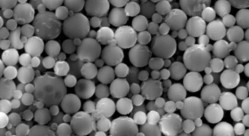Scientists look to deliver gene therapy via polymer nanoparticles

Scientists in the US report that gene therapy could be delivered using plastic biodegradable nanoparticles.
The Johns Hopkins group showed that their polymer particles preferentially targeted brain cancer cells in mice; they argue that this strategy offers a safer way to deliver a payload of DNA or RNA than viral delivery. Their nanoparticles with therapeutics inside can be freeze dried and stored for up to 2 years.
The hope initially is that the plastic nanoparticles could be placed in the brain by a surgeon to mop up residual cancer cells in patients with glioblastoma. This is the most common type of brain tumour in adults. It is extremely aggressive with median survival time just over 14 months for patients receiving standard treatments.
The nanoparticles delivered a florescent protein gene to human brain cancer cells with high efficacy and specificity in cells and in mice, according to the study in ACS Nano. In a previous paper, they showed that they could deliver a siRNA molecule to cells. This might allow them take advantage of RNA interference, a natural process whereby small strands of RNA are used to silence specific genes. “And since cancer is a genetic disease, this could allow us put [cells] back the way they should be,” explains Jordan Green, biomedical engineer at Johns Hopkins and senior author of the two recent papers.
A diverse selection of polymers was crucial to his strategy. “Rather than using one polymer material, we made a whole library of differential structured materials. Then we could investigate and see which ones led to the most promising effect,” Green explains. The type of polymer best suited to deliver a plasmid DNA and the type suited to small RNAs (sRNA) is different, so the team designed each polymer for its specific mission.
“We designed it to degrade differently based on the cargo they delivered,” adds Green. He told in-Pharmatechnologist that they are now doing more animal studies, but ultimately he would like to trial the particles for use during brain surgery. He collaborates with neurosurgeon Alfredo Quinones-Hinojosa at Johns Hopkins.
Ultimately systemic delivery is hoped for, with the plastic particles crossing the blood brain barrier. “We are interested in them doing everything, without needing localized access to the brain,” Green explains. The polymer degrades in the body within hours to days, yet can be stored as powder for two years. Adding water, this could then be added to cells, a mouse, even a patient.
Jean-Christophe Leroux of ETH Zürich describes the system as “quite potent at increasing the siRNA delivery.” However, he adds: “the data are very preliminary and the system needs to be tested under more physiological conditions. For instance its stability and biological half-life after injection would have to be assessed in order to really determine if this system has the potential of being used in medicine.”










